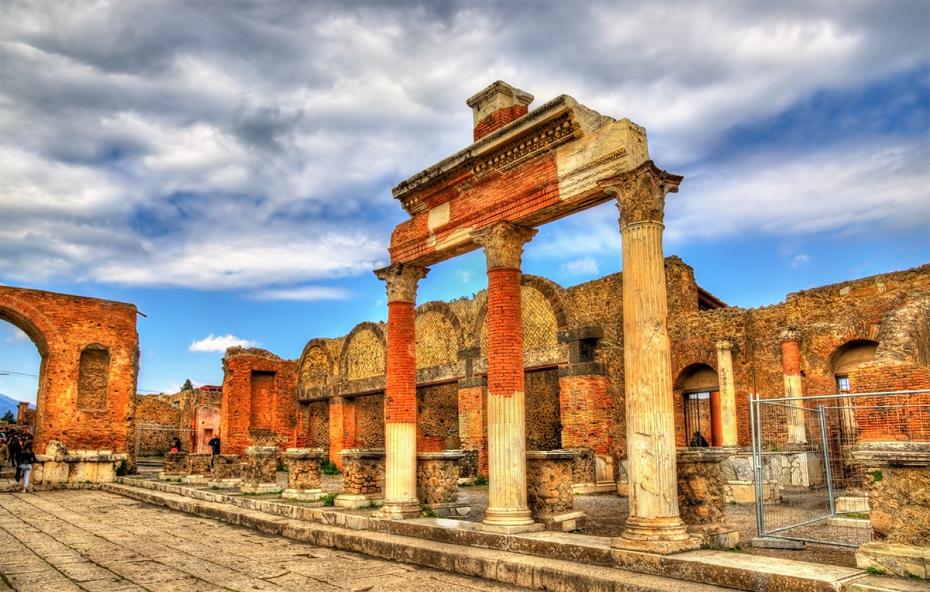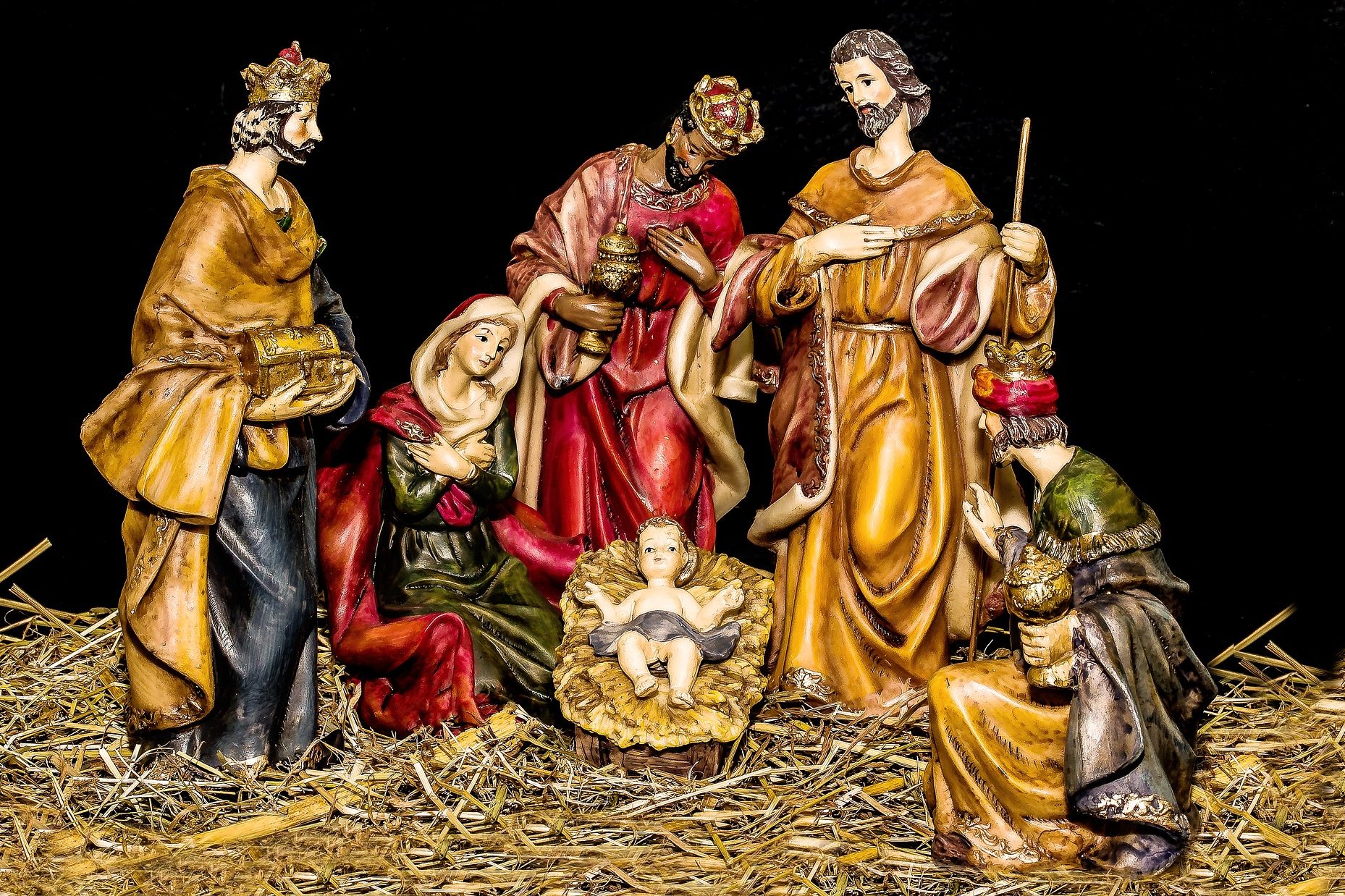It happened 1,935 years ago this August 24. The year was 79 AD, and at the base of Mount Vesuvius sat the city of Pompeii, home to about 12,000 people. The area was known for its black fertile soil, from which farmers produced an abundance of crops, vineyards and orchards.
Whether they were aware that the richness of the soil they tilled was the legacy of previous volcanic eruptions is unclear. But after the eruption of 79 AD, the city lay buried under a thick layer of volcanic ash and mud, frozen in time and, for the most part, forgotten.
It was not until 1748, when a surveying engineer happened to discover evidence of a civilization buried beneath his feet that the excavation of Pompeii began. In the years since, archaeological interpretations, came to us like voices from the past, revealing a theoretical picture of what might have happened.
There is evidence to indicate that about 2,000 people chose to remain in Pompeii, taking refuge in cellars or stone structures with the intention of riding out the firestorm. But on the morning of August 25, those who remained were killed by clouds of toxic gases which poured into the city followed by rock and ash. However, not all we have learned about the eruption comes from archeologists.
Out of the past comes an account by one called Pliny the Younger, who at that time was a 17-year-old student, living with his mother in his uncle’s villa near the town of Misenum. The uncle, Pliny the Elder, was a well-known expert in the study of natural history and was known to take an interest in natural phenomena. He was also the commander of the naval fleet stationed at Misenum, the site of an ancient port in Campania. Today, it is known as Miseno, located at the far end of the bay of Naples, a distance of about twenty miles from Mount Vesuvius.
In two letters to the historian Tacitus, discovered centuries later, Pliny the Younger described the eruption of Mount Vesuvius and the death of his uncle, Pliny the Elder. From the villa at Misenum, Pliny the Younger was able to observe the eruption of Mount Vesuvius in relative safety. In writing about the afternoon of August 24, 79 AD, he stated that his mother noticed an unusual-looking cloud in size and appearance in the far distance and called the strange sight to the attention of her brother, Pliny the Elder.
Pliny the Elder climbed to a place where he could get a better look at the cloud and he noticed that it appeared to be rising from a mountain. It was not until later that the mountain was determined to be Mount Vesuvius.
In his own words, Pliny the Younger wrote, “I can best describe its shape by likening it to a pine tree. It rose into the sky on a very long ‘trunk’ from which spread some ‘branches.’ I imagine it had been raised by a sudden blast, which then weakened, leaving the cloud unsupported so that its own weight caused it to spread sideways. Some of the cloud was white, in other parts there were dark patches of dirt and ash. The sight of it made the scientist in my uncle determined to see it from closer at hand.”
Pliny the Younger went on to tell how his uncle ordered a boat made ready and invited the nephew to come along. But Pliny the Younger, a student at that time, declined the invitation, preferring to remain home in order to study. As Pliny the Elder was leaving the house, he was handed a message from Rectina, wife of Tascus, saying that she was terrified of the impending danger, since her villa was situated at the foot of Vesuvius and there was no way to escape except by boat.
So the expedition which started out as a quest for knowledge, became a mission of rescue. As navy commander, he gave orders for war ships to be launched and went on board himself with the intention of bringing help to many more people besides Rectina. He hurried to the place from which many were hastily leaving, steering his course straight for the danger zone, toward Mount Vesuvius in the bay of Naples. At this point, it is not clear how Pliny the Elder and his men met their demise, but it seems that in an effort to save others, he and those around him were enveloped in gasses which had gushed up into a steaming cloud as the flaming lava flowed into the sea.
Additionally, Pliny the Younger described his personal encounter with the forces of the volcano which he experienced on the second day of the disaster: by then the ashes and airborne debris having reached the town of Misenum, prompted him to flee the villa with his mother to a place of safety.
Of this experience he writes, “Ashes were already falling, not as yet very thickly. I looked around: a dense black cloud was coming up behind us, spreading over the earth like a flood. ‘Let us leave the road while we still can see,’ I said, ‘or we shall be knocked down and trampled underfoot in the dark by the crowd behind.’ We had scarcely sat down to rest when darkness fell, not the darkness of a moonless or cloudy night, but as if the lamp had been put out in a closed room.
“You could hear shrieks of women, the wailing of infants and the shouting of men; some were calling their parents, others their children or their wives, trying to recognize them by their voices. People bewailed their own fate or that of their relatives, and there were some who prayed in their terror of dying. Many besought the aid of the gods, but still more imagined there were no gods left, and that the universe was plunged into eternal darkness for evermore.
“There were people, too, who added to the real perils by inventing fictitious dangers: some reported that part of Misenum had collapsed or another part was on fire, and though their tales were false, they found others to believe them. A gleam of light returned, but we took this to be a warning of the approaching flames rather than daylight.
However, the flames remained some distance off; then darkness came on once more and ashes began to fall again, this time in heavy showers. We rose from time to time and shook them off, otherwise we should have been buried and crushed beneath their weight. I could boast that not a groan or cry of fear escaped me in these perils, but I admit that I derived some poor consolation in my mortal lot from the belief that the whole world was dying with me and I with it.”
Historians have estimated that up to 75% of Pompeii’s population perished from the inhalation of gases and ash, but a new study argues that many victims of the eruption died of unbearable heat exposure of up to 575 degrees Fahrenheit by a phenomenon known as a Pyroclastic surge.
To be continued.































